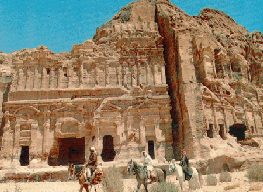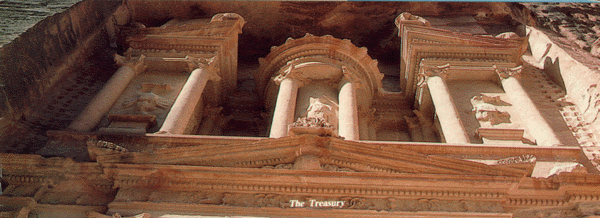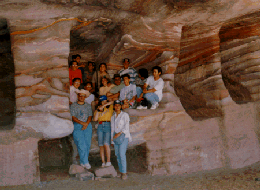

The jewel of South Jordan is Petra, Petra was the capital city of the Nabataeans, a tribe of pre-Roman Arabs who dominated the region around the Sixth century BC. Petra is always breath-taking, never to be forgotten. The city remained unknown to the Western World for hundreds of years until a Swiss explorer, J.L. Burckhardt, heard about its existence from the local Bedouins in 1812.
The Nabataeans carved their Capital in the canyons and hills of sandstone of Wadi Araba in Jordan. The entrance to the city is through The Alley (Al-Siq), a winding trail at the bottom of the canyon. Most famous is The Treasury which is featured in many movies. Petra's most famous and impressive monument. You are totally engulfed by the magic and the beauty, but there is much more yet to see.

The city includes other fascinating monuments and structures, such as Urn Tomb and the Royal Tombs, the Colonnade Street, the Temples of Dushara and Al-Uzza, and the High Place of Sacrifice.
The drama of visiting Petra starts with the journey, on horseback, horse-drawn carriage or foot, into the mountain-ringed city.
But
Petra is not only about the Nabataeans. The greater Petra region was inhabited
by people. The small museum within Petra, displaying artifacts in the region,
is the perfect place to appreciate the
advanced
technical and artistic skills of the Nabataeans and the other ancient peoples
who inhabited the Petra basin.
Petra itself, forged from the rock by the hands of God and nature, is ideal for those who like to combine ancient wonders with adventure holidays. The beauty of the landscape invites you to set off on day-long hikes through valleys, slightly more demanding treks along ancient mountain trails, or, for the very hardy, long and steep climbs on trails to several of the highest mountaintops, where there is always a Nabataean monument or two to remind you that many others have passed this way before.
